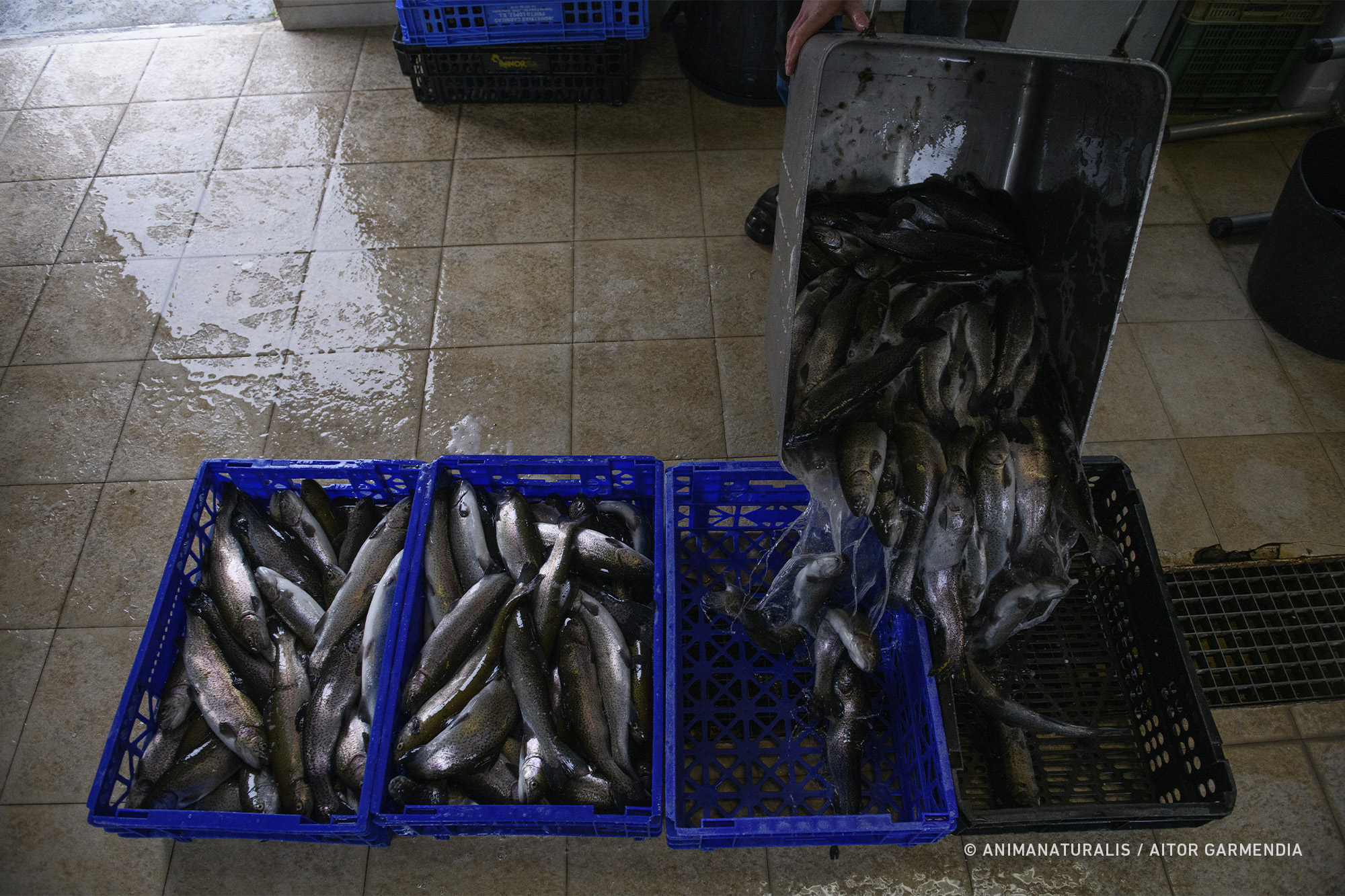Transport and Handling of Fish

Transporting fish to slaughterhouses, when not slaughtered at breeding facilities, is extremely stressful. Fish are typically moved in water containers like wellboats, designed to maintain moisture. However, oxygen levels during transport are often low, increasing stress and compromising welfare. Oxygen deprivation can reduce activity and cause suffocation sensations.
Overcrowding and water turbulence also contribute to discomfort, generating anxiety and erratic movements. This handling increases physical injury risks like bruises and abrasions from crowding pressure.
Additionally, improper transport handling causes other welfare issues, such as physical damage from container overcrowding. Fish suffer impacts and scrapes when pressed against others or handled roughly, increasing journey suffering. These transports are especially concerning when water conditions aren't properly monitored, potentially degrading water quality and increasing toxic ammonia levels.
All these factors compound fish anxiety and distress, prolonging suffering until slaughter, where the killing process is typically equally traumatic.
Sources:
- Transtrucha S.L. (n.d.). International transport of live fish.
https://transtrucha.es/ - Spanish Ministry of Agriculture, Fisheries and Food. (n.d.). Requirements for aquaculture transport.
https://www.mapa.gob.es/es/ganaderia/temas/comercio-exterior-ganadero/requisitosparaelmovimientonacionaleintracomunitariodeanimalesdeacuicultura_tcm30-578328.pdf - FAO. (n.d.). The transport of live fish.
https://www.fao.org/4/af000e/AF000E06.htm - European Commission. (2023). Proposed legislation for animal transport.
https://food.ec.europa.eu/system/files/2023-12/aw_in-transit_reg-proposal_2023-770_0.pdf
